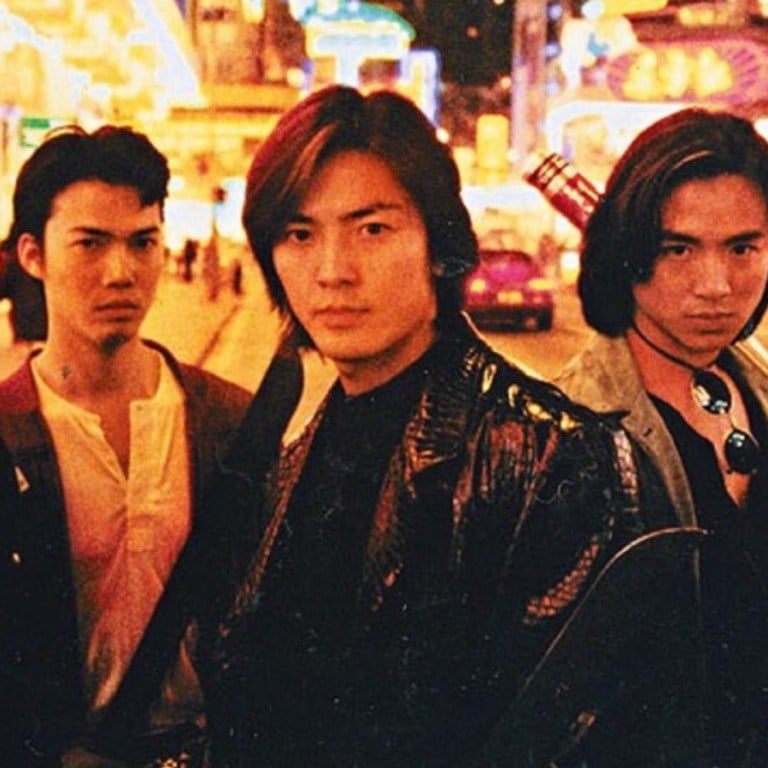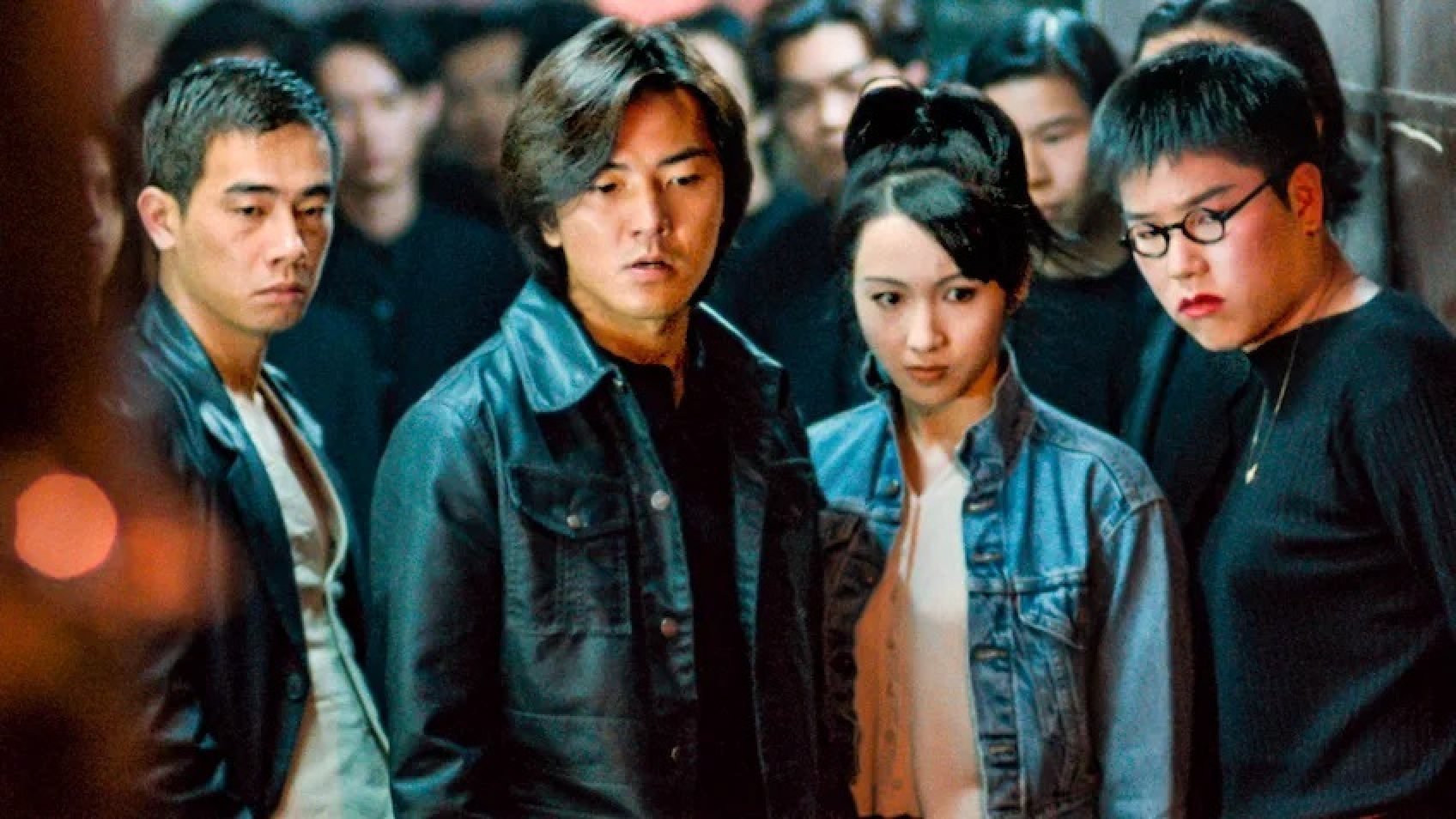
How Hong Kong triad film Young and Dangerous and its sequels, directed by Infernal Affairs’ Andrew Lau, become pop-culture classics
- Young and Dangerous put a youth-oriented spin on the triad genre by adding pop stars, fashionable clothing and moving away from the idea of the individual hero
- The film’s success resulted in five popular sequels – two were released in the same year as the original – plus a prequel, and numerous spin-offs and rip-offs
The Hong Kong triad film Young and Dangerous, directed by Andrew Lau Wai-keung, who would later go on to make Infernal Affairs, was a smash hit at the box office when it was released in 1996.
The film’s success resulted in five popular sequels – two of which were released in the same year as the original – plus a prequel, and numerous spin-offs and rip-offs.
The Young and Dangerous series put a new youth-oriented spin on the genre by adding glamorous young stars and fashion.
The triad “heroes” were played by Cantopop star Ekin Cheng Yee-kin, replete with fashionable clothing and his trademark floppy fringe, with actor/singer Jordan Chan Siu-chun and two other members of his Wind Fire Sea pop group.
Zany television celebrity Jerry Lamb Hiu-fung also starred as a member of the gang, and Francis Ng Chun-yu played a suave gang boss rival. Genre veterans like Simon Yam Tat-wah were relegated to supporting roles as ageing triad elders.
Chow Yun-fat on his favourite actors, dislike of violence and ‘amazing’ wife
“Woo’s vision of the seedy triad underworld was classical in scope, rising to the level of mythology, in which the good and bad got what they deserved,” this journalist wrote in 1996. “As tradition goes, the original triad societies upheld a rigid code of honour for their members in an attempt to impose some kind of order on their world.
“But a decade is a long time in Hong Kong cinema, and the Young and Dangerous series offers a different vision of triad life. Its youthful gangsters have no lofty codes of honour. By part three, chaos has replaced order as the youngsters wrest control from established leaders and start to run things in their own brash way.”
One phenomenon that connected the Young and Dangerous films with their predecessors was a public outcry about how the glamorisation of triad life in the movies was making it easier for the real gangs to recruit teenagers to their ranks.

“To a generation of teenage fans, these are hero figures acting out the kind of fantasy which wins you the respect of your male friends and the love of the girls,” a Post story explained in 1992, referring to John Woo films like The Killer.
“But when the action repeats itself in real life on the streets of Mong Kok or Tuen Mun, real people spill real blood. The reality is triads and triad violence.”
The Post story then focused on how some teenagers may have been affected by the glamorous depiction of triad life in the movies. One father, whose 16-year-old son was convicted for his part in killing a 14-year-old schoolmate, blamed the influence of “glossy glamorised triad films”.

A YMCA social worker interviewed by the Post added that teenagers “often imitate the behaviour of triad members [in films], especially those featuring popular celebrities”.
At the time, many felt a solution would be to give triad films a Category III rating, for persons 18 and over, that would stop young teens from seeing them – triad films have generally received a IIB rating, or not suitable for children and young persons.
The Young and Dangerous series received a similar public response a few years later. The Post referred to a “chorus of accusations that the movies are glorifying violence, the triad life, and anarchic youth”.
But such feelings did not seem to affect its box-office appeal – as Fruit Chan told this journalist in 1997, “Parents took their kids to see these movies and didn’t show any signs of shame – they enjoyed them. That’s the wrong direction to be heading in.”

Reacting to such accusations, Young and Dangerous scriptwriter Manfred Wong (aka Man Chun) told the Post they were overstated. “The accusations are really nothing more than baseless attacks,” he said.
“I really don’t like people saying that Young and Dangerous will spoil youngsters. Kids won’t go astray just by watching one movie. We are not committing arson. We comply with all the film regulations, and the two movies are only Category IIB.”
Wong even claimed that he and Lau had tried to play the many scenes of violence down.
“We make the effort to introduce humour in every scene and there is a sense of cuteness about the characters,” he said. But he did admit that the filmmakers had planned to attract a youthful audience to their triad story by casting young attractive pop stars.
Life Must Go On: Ekin Cheng hams it up for goofy sports comedy
“We used two up-and-coming artists, Ekin and Jordan, because the audience is tired of seeing the actors who play villains all the time. There has never been a gangster film that made use of pretty faces like that. It gives the audience a feeling of freshness.”
Wong also noted that the use of a pop group like Wind Fire Sea on the soundtrack was original for a triad film, and increased its youth appeal, and said the posters were geared to appealing to kids who “did not hang out on the streets”.
Young and Dangerous was not an original idea – it was based on a Hong Kong comic book which translates as something like Rascals or Teddy Boys. The comic was very popular, selling about 40,000 copies each week. The film’s characters were modelled on those in the comic book, and illustrations based on the comic appear in the movie.

The films’ stories chart the rise of the young triads in the Hung Hing gang as they battle their rivals, rise up the ranks and gradually eclipse their bosses.
In an interview with the Hong Kong International Film Festival, director Lau also defended the series. “The public has the opinion that the Young and Dangerous series is very violent. In fact, there are only eight fight scenes in all three films [so far]. All the others are essentially normal drama scenes.”
Lau also claimed it was true to life. “Many Big Brothers of triad societies have found the films very touching. They have told me in private that the characters bore a strong resemblance to them,” he added.
Social factors also influenced the success of the films. One local critic noted that the “hero” films of John Woo stressed the power of the individual, whereas the Young and Dangerous series focused on a group effort.

“The myth of the individual hero is no longer in tune with the present age,” he wrote in 1997. “The Young and Dangerous series emphasised the collective spirit and the theme that unity is strength.
“Details of real life were captured through the many location scenes, such as playgrounds and cafes on housing estates. This differed greatly from the inflated romanticism of the ‘hero’ films.”
The looming date of 1997 may have also played a part. As this journalist wrote in 1996, “The Woo-era films may have fulfilled a need for heroes in the face of an unpredictable future under China. Now Young and Dangerous picks up on one of the possible futures for Hong Kong after the 1997 handover – urban chaos.”
In this regular feature series on the best of Hong Kong cinema, we examine the legacy of classic films, re-evaluate the careers of its greatest stars, and revisit some of the lesser-known aspects of the beloved industry.
